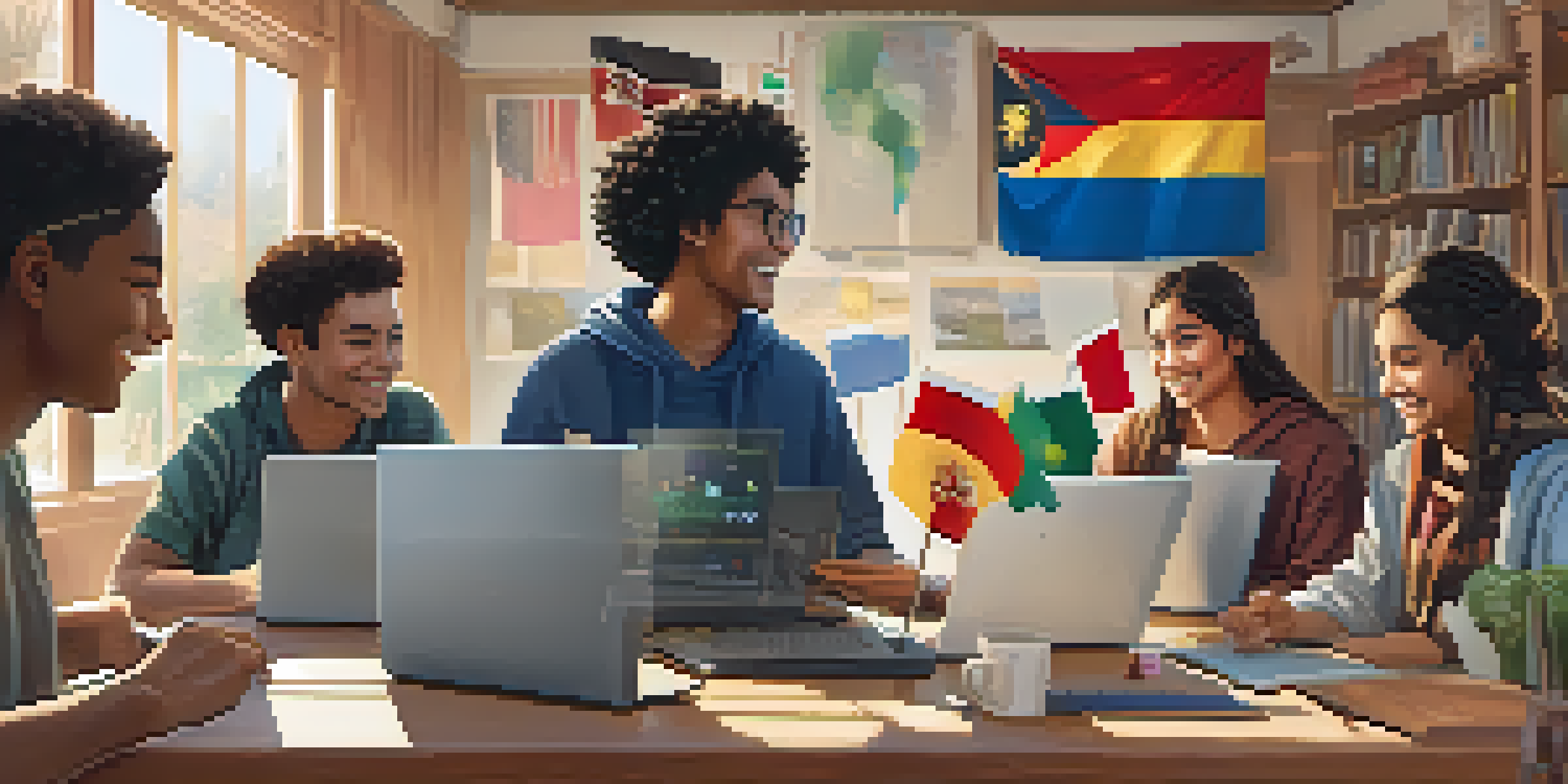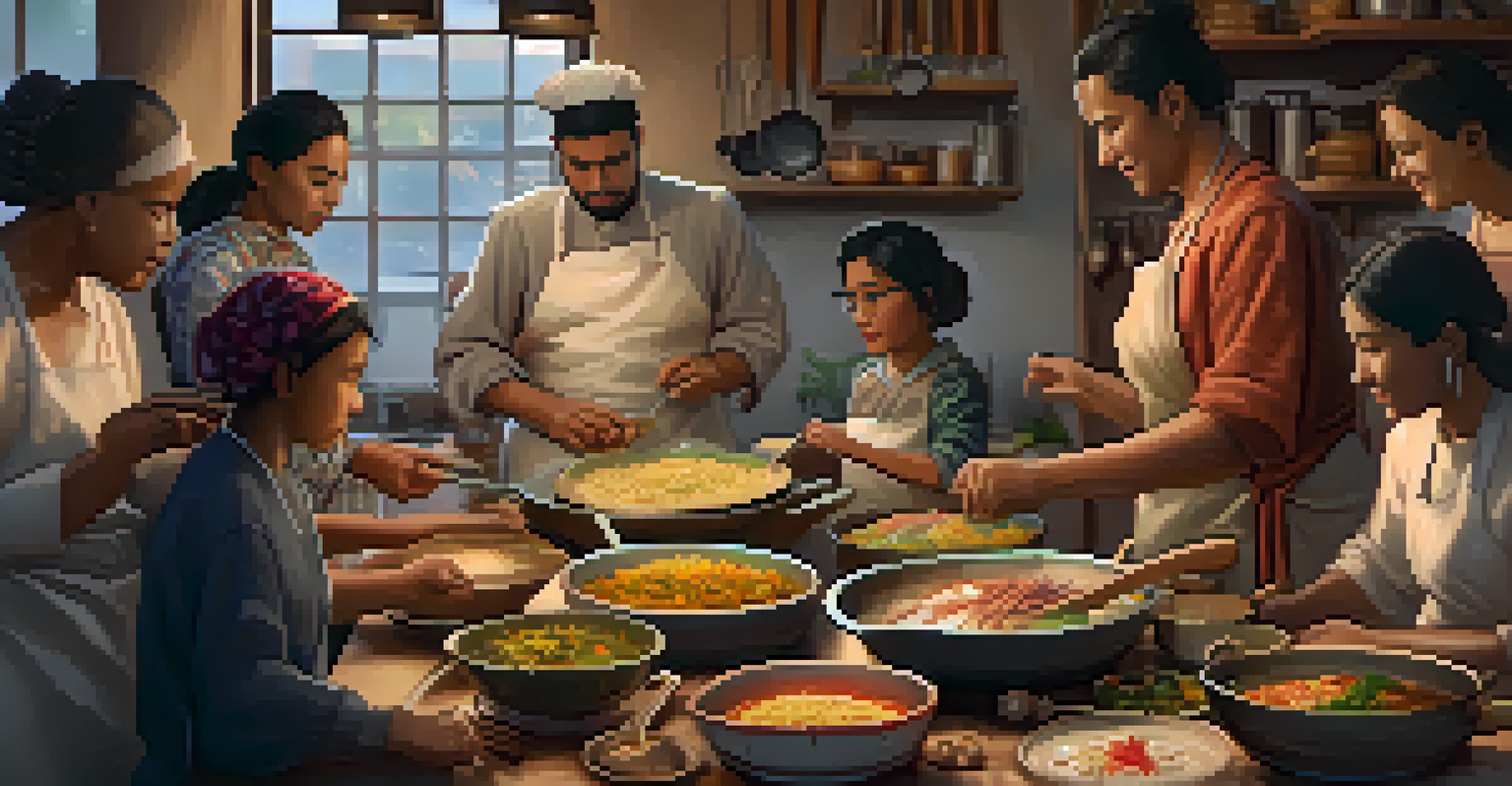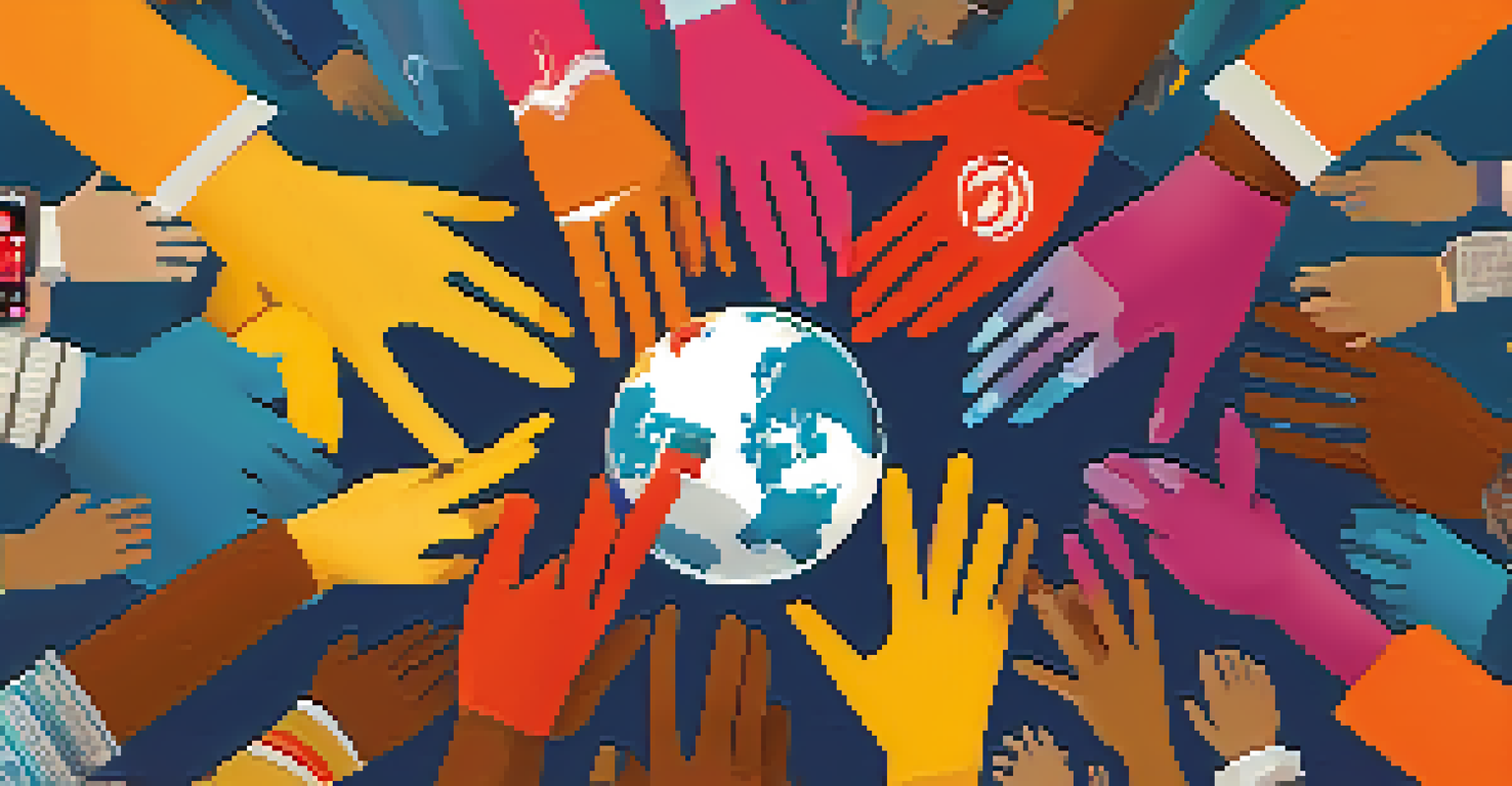The Role of Social Media in Facilitating Cross-Cultural Learning

Social Media: A Global Connector for Learning
Social media platforms like Facebook, Twitter, and Instagram serve as bridges across cultural divides. They allow users to share experiences, stories, and knowledge with people from different backgrounds, fostering a sense of global community. This interconnectedness makes it easier for individuals to learn about customs, traditions, and languages that are different from their own.
The world is a book, and those who do not travel read only one page.
For instance, a student in the United States can engage with a peer in Japan through Instagram, exchanging insights about their respective cultures. This direct interaction not only enhances understanding but also cultivates empathy and respect for diversity. The global reach of social media thus plays a crucial role in making learning more inclusive and expansive.
Moreover, the ability to share multimedia content—like videos, photographs, and live streams—further enriches the learning experience. By seeing and hearing about other cultures in real time, users can grasp the nuances of different lifestyles, which textbooks alone might not convey.
Cultural Exchange Through Online Communities
Online communities are thriving spaces where people come together to share cultural experiences. These groups often focus on specific interests, such as travel, cuisine, or language learning, allowing members to exchange knowledge and perspectives. For example, a cooking group could connect people from various countries, enabling them to share traditional recipes and cooking techniques unique to their cultures.

This exchange not only broadens culinary horizons but also encourages participants to explore the stories behind each dish. As members discuss their heritage and the significance of certain foods, they foster a deeper understanding of each other's cultures, creating a rich tapestry of shared knowledge.
Social Media Connects Cultures
Platforms like Facebook and Instagram foster global community by allowing users to share cultural experiences and knowledge.
Such interactions can lead to lifelong friendships and collaborations, transcending geographical boundaries. The sense of belonging that these communities provide can empower individuals to embrace their own culture while appreciating the beauty of others.
Learning Languages in a Cross-Cultural Context
Social media is a powerful tool for language learning, providing opportunities for immersive experiences. Platforms like Duolingo and language exchange groups on Facebook allow users to practice languages with native speakers, enhancing their communication skills. Engaging with speakers from different cultures encourages learners to use the language in real-world contexts, making the process more relevant and enjoyable.
Culture is not just an accessory to our existence; it is a part of who we are.
For example, a Spanish learner might join a group where they can converse with native speakers, gaining insight into colloquial expressions and cultural references. This interaction not only improves language proficiency but also helps learners understand the cultural subtleties that come with language use.
Additionally, social media facilitates the sharing of resources, such as videos, podcasts, and articles, which can further enhance language skills. By immersing themselves in content from various cultures, learners can develop a more nuanced understanding of both the language and the people who speak it.
Promoting Global Awareness Through Social Media Campaigns
Social media campaigns often highlight global issues, encouraging cross-cultural awareness and understanding. Movements like #BlackLivesMatter and #MeToo have sparked conversations that transcend borders, allowing individuals to share their experiences and perspectives. These campaigns not only educate participants about different social issues but also foster solidarity among diverse groups.
By engaging with these campaigns, users can learn about various cultural contexts and the challenges faced by people around the world. This heightened awareness can inspire action, prompting individuals to advocate for change in their own communities.
Language Learning Through Interaction
Social media enables immersive language learning by connecting users with native speakers, enhancing cultural understanding.
Moreover, the viral nature of social media ensures that important conversations reach a broad audience, amplifying voices that might otherwise go unheard. This collective effort promotes empathy and understanding across cultures, fostering a more informed global community.
Challenges of Cross-Cultural Communication on Social Media
While social media offers vast opportunities for cross-cultural learning, it also presents challenges in communication. Misunderstandings can arise due to language barriers, cultural differences, and varying social norms. For instance, a comment intended as humor in one culture might be perceived as offensive in another, leading to confusion or conflict.
These challenges highlight the importance of cultural sensitivity when engaging with diverse audiences online. Users need to be aware of their own biases and the potential implications of their words. Educating oneself about different cultures can help mitigate misunderstandings and foster more respectful interactions.
Additionally, the anonymity of social media can sometimes lead to negative behavior, such as trolling or cyberbullying, which can discourage open dialogue. Encouraging respectful communication and empathy is essential for creating a safe space for cross-cultural learning.
The Role of Influencers in Cultural Learning
Influencers play a significant role in shaping perceptions of different cultures on social media. By showcasing their travels, culinary experiences, or cultural practices, they can introduce their followers to aspects of life in various parts of the world. This exposure can spark interest and curiosity, encouraging followers to learn more about those cultures.
For example, a travel influencer might share their experiences in a remote village, highlighting local traditions and customs. Such content not only entertains but also educates audiences about the richness of different cultures, inspiring them to explore further.
Influencers Shape Cultural Perceptions
Influencers introduce their audiences to diverse cultures, but they must do so with authenticity and sensitivity to avoid stereotypes.
However, influencers also bear the responsibility of portraying cultures authentically and respectfully. Misrepresentation or cultural appropriation can perpetuate stereotypes and harm communities. Therefore, it's vital for influencers to approach cultural content with sensitivity and awareness, ensuring that they honor the traditions they share.
Future Trends in Cross-Cultural Learning via Social Media
Looking ahead, the potential for social media to facilitate cross-cultural learning continues to evolve. Emerging technologies, such as virtual reality (VR) and augmented reality (AR), could create immersive learning experiences that transport users to different cultures without leaving their homes. Imagine exploring a bustling market in Morocco through a VR headset while interacting with locals in real time!
Moreover, as social media platforms innovate and expand, new features will likely enhance how users connect and communicate across cultures. Enhanced translation tools, for example, could break down language barriers, allowing for smoother interactions and deeper understanding.

As more people recognize the value of cross-cultural learning, we can expect to see increased collaboration between educators and social media platforms. Initiatives that promote cultural exchange and understanding will help foster a more connected, empathetic world.